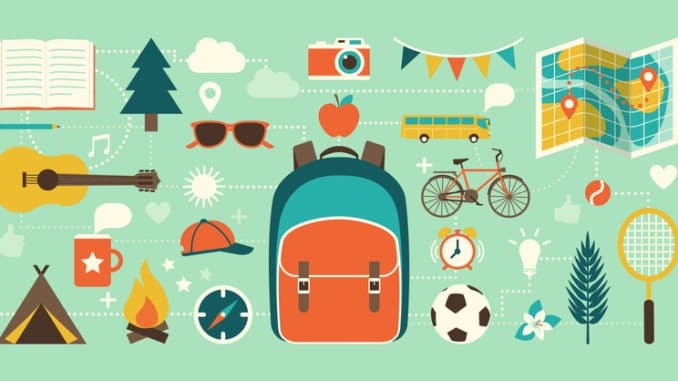
Joanne Wilkinson-Tabi, executive headteacher at Ebbsfleet Green Primary School in Ebbsfleet, Kent, tells us about a new outdoor learning grant awarded to her school in times of hardship, the role outdoor learning plays in whole child development, and how best to implement it in your school
At the start of the new school year I was delighted to learn that our new school, Ebbsfleet Green Primary School in Ebbsfleet Garden City, Kent, had been awarded a generous £3K grant to fund outdoor learning from the Ebbsfleet Development Corporation’s EDC Community Investment fund. This year the EDC, which typically only accept bids from registered charities and not-for-profit social enterprises, kindly made a special exception for hardship. Building work on our new school had been halted due to COVID which meant that our pupils had to commence their education in temporary accommodation at nearby Bligh Primary which, like Ebbsfleet, forms part of the Maritime Academy Trust. Building work on our new school – which is scheduled to open in September 2021- has since recommenced.
The grant has been used to purchase a child-friendly greenhouse, gardening equipment, plants and seeds, so that the children can grow vegetables in the new school’s allotments, along with a child-safe cooker/oven and utensils so the children can cook their homegrown produce. Scooters, bikes, balls, hoops and balancing toys will support the children’s physical and mental growth and well-being. Science kit was also on the list, so that they can explore the minibeasts and other wildlife in their woodland wild space.
At Ebbsfleet we fully embrace outdoor learning which plays a significant role in the development of children’s skills, values and attitudes. Alongside well-being and confidence, outdoor learning supports child-initiated exploration through spontaneous opportunities to observe and learn from nature; it inspires awe and wonder at the natural world and this, in turn, facilitates social communication, physical development, recognising and managing risk and promoting healthier choices. Building trust forges relationships and helps children understand the importance of collaboration.
If you are interested in creating a captivating outdoor environment for children to explore please read on. Here are my top tips to for planning an outdoor learning space in your school.
Continuous provision
- Consider how easily children can access the outdoors; indoor and outdoor learning should complement each other and be a natural choice for the children to make during their daily routine.
- With appropriate clothing for rain and cold, as well as sunshine and heat, children can have access to the outdoors whatever the weather.
Resources
- Choose versatile resources so that the children can decide how to use them. Soil, stones, logs and water are always readily available, cheap, and easy to store and offer endless learning experiences. For example, a mud kitchen encourages children to enquire, and be inventive and imaginative with the natural resources around them.
- Ensure outdoor opportunities mirror those available indoors, giving children the chance to draw, write, read or be creative outside on giant chalkboards or whiteboards, easels or on the ground.
- Use water for messy play – it offers endless learning experiences and allows children to experiment with science and maths concepts, such as volume and capacity, and to learn about the effects of water on materials and surfaces.
Active play
- Invest in static equipment as well as balls, bikes, ribbons and ropes to encourage movement and to develop, balance co-ordination and risk-taking in a safe environment.
Zoning and layout
- The outdoors offers an endless choice of experiences, so creating areas for quieter, more reflective, activities and areas for more active pursuits means everyone feels safe in their environment and can remain fully engaged. These zones can be naturally defined using a variety of surfaces such as grass, sand, soil, stones and pebbles and decking
- Shade and shelters offer protection from the weather as well as opportunity for role play and creative play. They can comprise a mix of natural and manufactured structures, trees, gazebos, tents or tarpaulins. Children love to create their own dens – a natural way to learn about materials, shelter and the weather – and to become designers and engineers.
- Wooded areas not only offer shelter and shade but also habitats for plants and animals. Children explore, question and learn about nature, and appreciate and care for their environment.
Engaging in outdoor play and learning environments provides children with creative and expressive play opportunities that are not possible in an indoor setting. Outdoor settings offer flexibility and freedom so children relax, engage and enjoy themselves whilst learning.





Be the first to comment